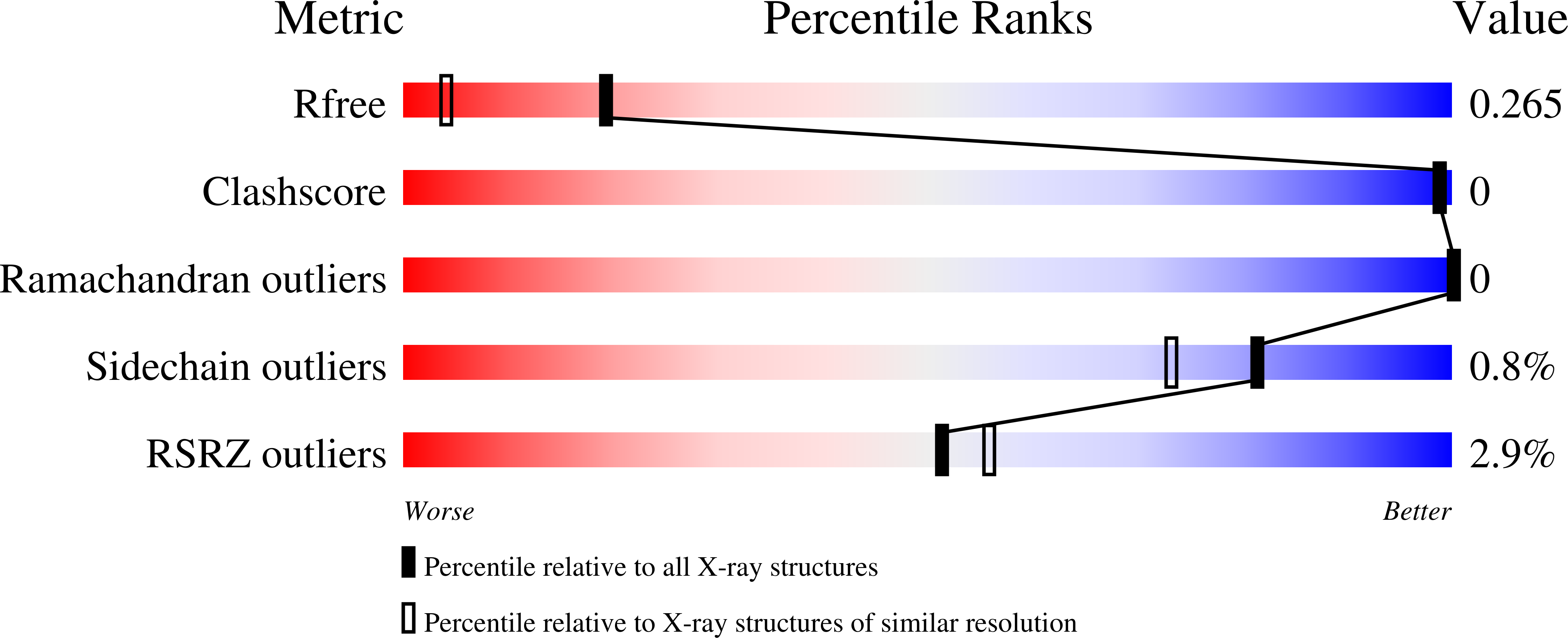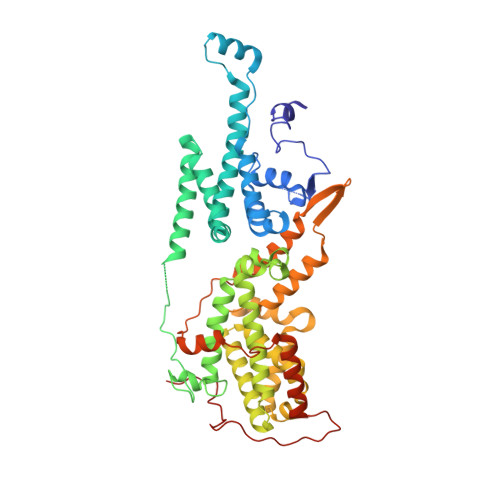One Atom Makes All the Difference: Getting a Foot in the Door between SOS1 and KRAS.
Ramharter, J., Kessler, D., Ettmayer, P., Hofmann, M.H., Gerstberger, T., Gmachl, M., Wunberg, T., Kofink, C., Sanderson, M., Arnhof, H., Bader, G., Rumpel, K., Zophel, A., Schnitzer, R., Bottcher, J., O'Connell, J.C., Mendes, R.L., Richard, D., Pototschnig, N., Weiner, I., Hela, W., Hauer, K., Haering, D., Lamarre, L., Wolkerstorfer, B., Salamon, C., Werni, P., Munico-Martinez, S., Meyer, R., Kennedy, M.D., Kraut, N., McConnell, D.B.(2021) J Med Chem 64: 6569-6580
- PubMed: 33719426
- DOI: https://doi.org/10.1021/acs.jmedchem.0c01949
- Primary Citation of Related Structures:
7AVI, 7AVL, 7AVS, 7AVT, 7AVU, 7AVV - PubMed Abstract:
KRAS, the most common oncogenic driver in human cancers, is controlled and signals primarily through protein-protein interactions (PPIs). The interaction between KRAS and SOS1, crucial for the activation of KRAS, is a typical, challenging PPI with a large contact surface area and high affinity. Here, we report that the addition of only one atom placed between Y884 SOS1 and A73 KRAS is sufficient to convert SOS1 activators into SOS1 inhibitors. We also disclose the discovery of BI-3406 . Combination with the upstream EGFR inhibitor afatinib shows in vivo efficacy against KRAS G13D mutant colorectal tumor cells, demonstrating the utility of BI-3406 to probe SOS1 biology. These findings challenge the dogma that large molecules are required to disrupt challenging PPIs. Instead, a "foot in the door" approach, whereby single atoms or small functional groups placed between key PPI interactions, can lead to potent inhibitors even for challenging PPIs such as SOS1-KRAS.
Organizational Affiliation:
Boehringer Ingelheim RCV GmbH & Co KG, Dr. Boehringer-Gasse 5-11, A-1121 Vienna, Austria.
















